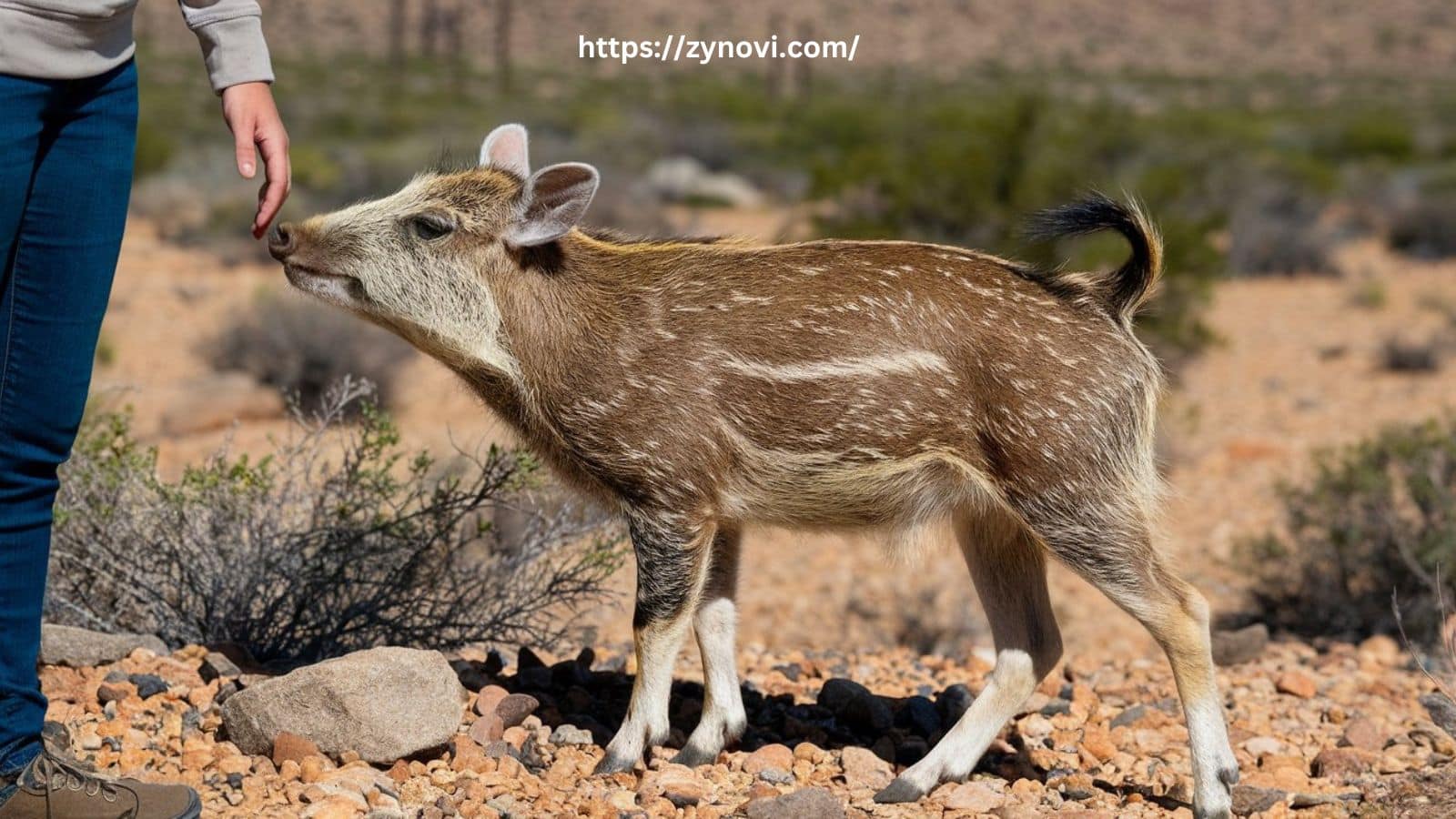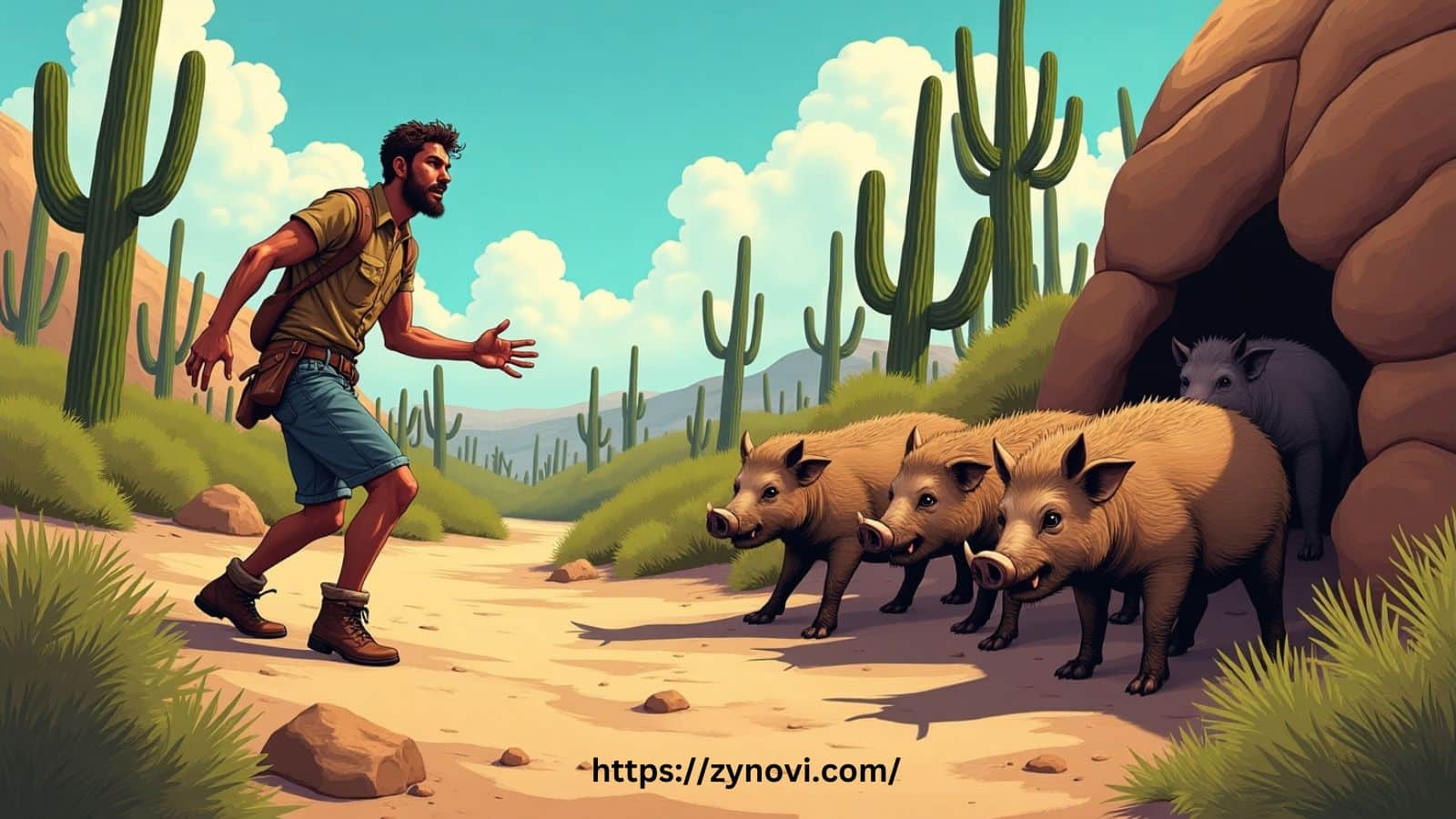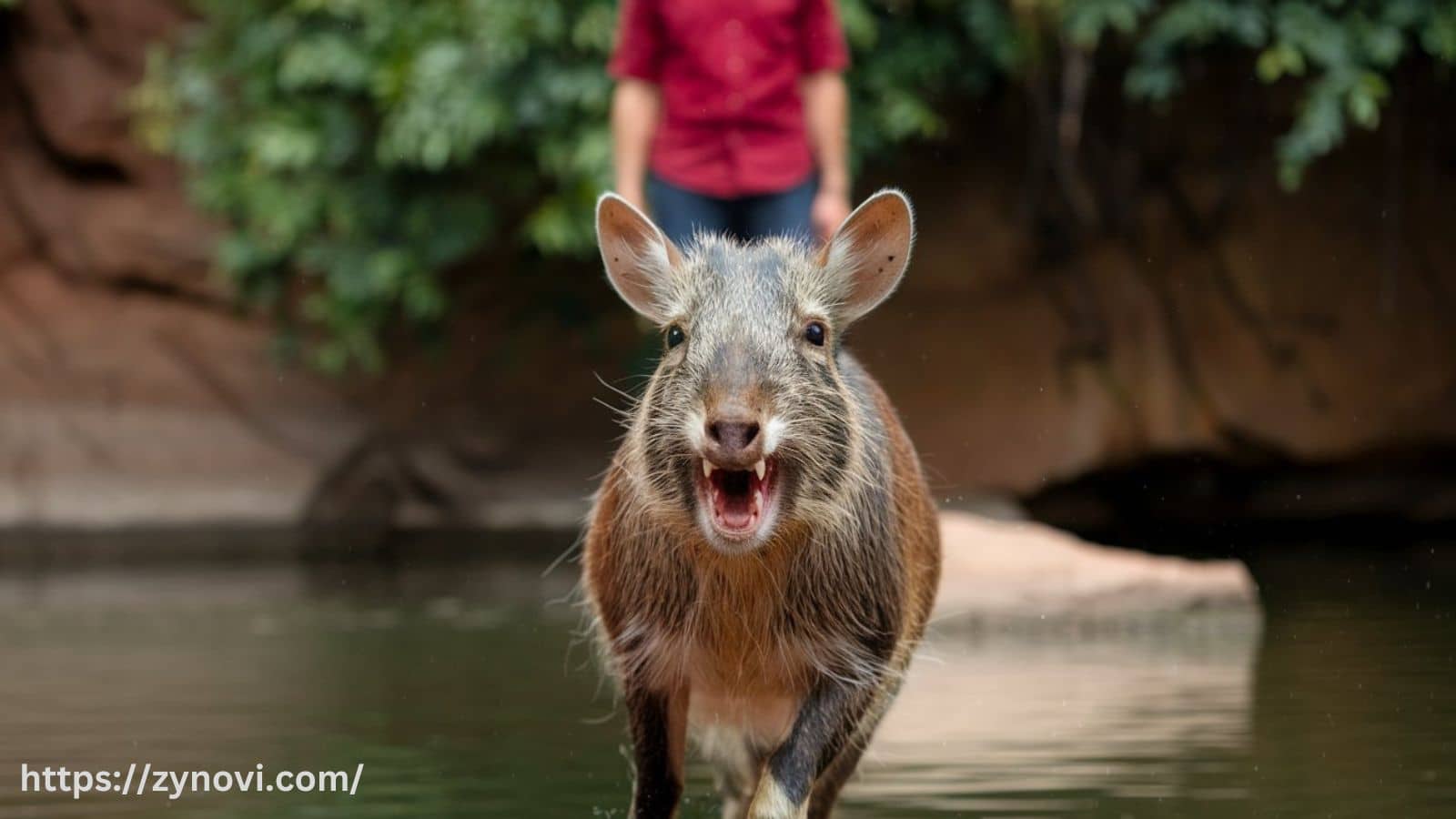Will Javelinas Attack Humans? While they may seem like innocent animals at first glance, many wonder whether javelinas can pose a threat to humans.
It’s a question you might ask if you’ve ever spotted one of these wild, stocky creatures near your home or on a hike. But are they truly a danger to you, your family, or your pets? The answer is more fascinating than you might think.
You’re about to discover the surprising truth about javelinas, their behavior, and what makes them tick. Whether you’re living in the Southwestern deserts or just curious about wildlife encounters, this guide will equip you with everything you need to stay safe and informed.
What Are Javelinas?
Physical Characteristics of Javelinas
Javelinas are medium-sized mammals belonging to the peccary family, often mistaken for wild pigs due to their similar appearance. However, they have distinctive features:
| Physical Characteristic | Description |
|---|---|
| Build | Stocky build with short legs. |
| Coat | Bristly coat of dark hair with a collar of white fur around the neck. |
| Size and Weight | Adults weigh 40-60 pounds and are 20-24 inches in height. |
| Tusks | Sharp tusks used for defense and foraging. |
Their acute sense of smell compensates for relatively poor eyesight and hearing, making them adept at detecting predators and food.
Natural Habitat
Javelinas are native to arid and semi-arid environments, including:
- Southwestern Deserts: Javelinas are native to arid regions, particularly in states like Arizona, New Mexico, and Texas, where they thrive in hot, dry environments.
- Forested and Thornscrub Regions: In Northern Mexico, they inhabit areas with dense vegetation, including forests and thornscrub ecosystems, which provide food and shelter.
- Suburban Expansion: Human encroachment has led to more javelinas venturing into suburban areas, where they scavenge for food and adapt to residential environments.
Understanding Javelina Behavior

Javelinas are social animals, often forming herds or bands of 10-20 individuals. These herds are structured with a hierarchy that ensures survival and protection.
- Herd Dynamics: Javelinas are highly social animals, typically living in herds or bands of 10-20 individuals, which provide safety and cooperation for survival.
- Communication and Bonding: They use vocalizations and physical behaviors like nuzzling and grooming to strengthen social ties and ensure harmony within the group.
- Defensive Instincts: The herd’s protective nature often leads to defensive reactions if any member perceives a threat, prioritizing the safety of the group.
Diet and Feeding Habits
As herbivores, javelinas primarily feed on:
- Diet: As herbivores, javelinas primarily eat prickly pear cactus, mesquite beans, and acorns, which are abundant in their natural habitats.
- Opportunistic Feeding: They also consume insects and other opportunistic food sources, often scavenging in residential areas for garbage or pet food when accessible.
- Activity Pattern: Their crepuscular behavior means they are most active during the early morning and late evening, aligning with cooler parts of the day.
Their crepuscular behavior means they are most active during early mornings and late evenings.
Territorial Instincts
Javelinas are highly territorial creatures, fiercely protective of their designated range. They use scent glands located on their backs to mark their territory, ensuring other animals recognize their claim.
This instinctive behavior helps maintain order within their habitat and reduces unnecessary conflicts among herds. However, when humans or pets unknowingly enter their territory, javelinas may perceive this as a threat.
Such intrusions can provoke defensive reactions, including growling, charging, or showing their sharp tusks. Understanding their territorial nature is crucial for avoiding confrontations and ensuring peaceful coexistence with these fascinating animals.
Why Do Javelinas Attack Humans?

Perceived Threats
Javelinas perceive humans or pets as potential predators. Common triggers include:
- Javelinas often view humans or pets as potential predators, especially if they feel their safety is compromised. Approaching too closely, particularly near their young, can trigger an instinctive defensive response.
- Similarly, sudden movements or loud noises can startle javelinas, leading them to react aggressively to protect themselves or their herd from what they perceive as a threat.
Defensive Behavior
When javelinas feel threatened, they exhibit aggressive responses such as:
- When javelinas feel threatened, they often display aggressive defensive behaviors to protect themselves. They may growl and show their sharp tusks as a warning.
- To appear more intimidating, they raise the hair on their backs, signaling their readiness to defend.
- If the threat persists, they might charge toward it, using their stocky build and tusks to ward off potential dangers. These behaviors are vital to their survival, allowing them to ward off predators or any perceived intruders in their territory.
These responses are primarily meant to ward off danger rather than cause harm.
Accidental Encounters
As human development expands into natural habitats, accidental encounters between javelinas and people have become more common, particularly in suburban areas. These wild animals are increasingly venturing into residential neighborhoods in search of food.
They are opportunistic feeders and are attracted to easily accessible sources like pet food, garbage, and fallen fruit. These encounters can happen unexpectedly, especially at night or early in the morning when javelinas are most active.
While javelinas generally avoid humans, these accidental encounters can lead to potential risks if the animals feel threatened or cornered.
How to Avoid Javelina Encounters
To minimize risks during outdoor activities or at home:
Practical Safety Tips
- Maintain a safe distance: Always keep your distance from javelinas. Never attempt to approach or feed them, as this can increase the likelihood of a defensive response.
- Secure food sources: Ensure trash bins are tightly closed, and avoid leaving pet food outside, as these are common attractants for javelinas looking for an easy meal.
- Install fencing: Installing sturdy fencing around gardens and yards can provide a physical barrier that helps keep javelinas from entering your property.
Deterring Javelinas
- Remove attractants: Clear away fallen fruit, secure compost bins, and clean up pet food to avoid drawing javelinas into your yard.
- Use non-toxic repellents: Repellents like predator urine or citrus sprays can be effective in keeping javelinas away, as they dislike the strong scent.
- Install motion-activated lights or sprinklers: Setting up motion-sensitive lights or sprinklers can startle javelinas and deter them from approaching your property.
Are Javelinas Attack Dangerous to Humans?

Are javelinas dangerous to humans? Here are some injuries and risks that effect by javelinas
Severity of Injuries
While javelina attacks are rare, their sharp tusks can inflict serious injuries, especially if they charge during a defensive reaction.
Rabies and Health Risks
Javelinas are not significant carriers of rabies, but their bites or tusk wounds can cause infections if not treated promptly. Always seek medical treatment after any injury.
Statistical Likelihood
Despite their defensive nature, intense injury risks from javelinas are minimal compared to other wildlife, such as coyotes or even Great White Sharks.
Do Javelinas Pose a Threat to Pets?
Risks to Dogs
Javelinas often perceive dogs as threats, especially if dogs bark or chase them. This can lead to defensive aggression, and a confrontation may result in injury to your pet due to the javelina’s sharp tusks.
Protective Measures
- Leash pets: Always keep dogs on a leash when walking in areas known to have javelina activity. This ensures you can maintain control and prevent your dog from approaching the animals.
- Supervise pets: Never leave pets unattended in yards, particularly during the early morning or late evening when javelinas are most active. Supervising your pets will reduce the risk of accidental encounters.
- Install secure enclosures: Build a fenced or enclosed area for your pets to play safely. This will prevent them from wandering into javelina territories and coming into contact with potentially aggressive animals.
How to Respond During and After a Javelina Encounter
During an Encounter
- Avoid direct eye contact: Javelinas may interpret direct eye contact as a sign of aggression or challenge, potentially escalating the situation.
- Use a loud, firm voice: Shout loudly and assertively to discourage their approach. This may startle the javelina and make it more likely to retreat.
- Retreat to a safe location: If the javelina shows signs of aggression, back away slowly and move to a secure area. Never turn your back on them, as this could trigger a chase response.
Post-Encounter Actions
- Report aggressive encounters: Contact wildlife officials to report the encounter. This can help authorities track javelina behavior and issue warnings in affected areas.
- Clean any wounds thoroughly: If bitten or scratched, clean the wound immediately to reduce the risk of infection. Seek medical attention if necessary.
- Consider professional advice: Consult with wildlife experts or pest control professionals for guidance on keeping javelinas away from your property and preventing future encounters.
FAQs
Do Javelinas Usually Attack Humans?
No, javelinas are generally shy and avoid human contact. However, aggressive responses may occur if they feel cornered or threatened.
What Should I Do If I See a Javelina?
- Stay calm and avoid sudden movements.
- Slowly back away while making yourself appear larger.
- Do not attempt to feed or interact with them.
Can Javelinas Be Dangerous to Dogs?
Yes, especially if dogs provoke them. Javelinas may charge to defend themselves, posing risks to unprotected pets.
How Can I Keep Javelinas Out of My Yard?
- Remove food attractants and secure garbage bins.
- Install sturdy fencing at least 4 feet tall.
- Use motion-activated deterrents to keep them at bay.
Are Javelinas Protected by Law?
Yes, in many areas, javelinas are protected under state wildlife laws, which may prohibit harming or harassing them without a permit.
Conclusion: Will Javelinas Attack Humans?
Javelinas are intriguing animals that contribute significantly to the balance of desert ecosystems. While they may act defensively when they feel threatened, attacks on humans are uncommon and usually preventable.
By learning about their behavior, giving them space, and following safety guidelines, we can minimize the risk of conflict. Respecting their natural habits and taking the necessary precautions ensures that both humans and javelinas can coexist safely.
With the right approach, these fascinating creatures can continue to thrive in their habitats without posing any danger to our communities.










